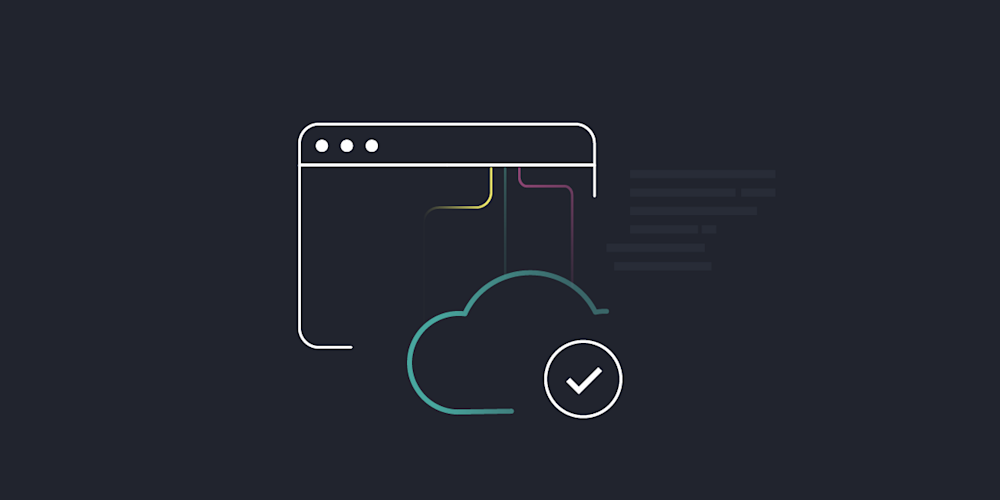
How to Set up Your SaaS Security Architecture for Success
The global SaaS market is estimated to reach $232 billion in 2024. The popularity of SaaS solutions can be explained by several factors. First, the SaaS delivery model is cost-efficient because it eliminates the need to invest in on-premise hardware and software. SaaS solutions are accessible and easy to use since customers only need to run apps without the need to manage any infrastructure. Finally, they don't require lengthy deployments and ongoing maintenance.
Meeting these expectations and delivering an excellent product is a must for SaaS developers. To ensure the availability and scalability of the solutions, and make them secure and durable, you must think of security to avoid future problems as your system and team grow. While leaning on another SaaS provider for security solutions may be tempting, you might expose your organization to risk if you depend on a third party.
Here, I outline several factors developers working in SaaS environments must consider when planning out the security of their offered solutions:
1. Consider Deployment and Portability
Imagine your solution initially launching in one locale; how will your system adapt when scaling to new territories? Coordinating security across different regions is more than just a technical challenge. It should be well thought out so that the future solution can be securely deployed in multiple data centers and regions. As you consider deployment strategies, factor in resilience to ensure your system can handle the transition to new territories without interruption or introducing new vulnerabilities.
Keep in mind that, especially if you expand internationally, different regions may have unique legal mandates affecting how you choose your hosting and even your cloud provider. For example, in some cases, you might need to adhere to regulatory compliance when storing user information depending on the user's region. Different regions will have different requirements, and the overall solution needs to be able to cater to all of them.
2. Leave Room for Growth
As your solution scales, your security system must scale with it. This means anticipating changes in environments, user roles and permissions, and potential integrations with an increasing number of third-party services. Implementing a centralized identity management system can be pivotal in managing these complexities efficiently.
Think big from the start. Consider scenarios in which your service might need to accommodate numerous customers with distinct access requirements. This can get particularly challenging if your SaaS solution hosts applications for multiple clients with different requirements.
A robust identity and access management (IAM) system can help streamline user access control, even in diverse and rapidly evolving scenarios where customers have different needs for how identities are handled and how their APIs are protected. To be integration-ready, use a solution based on established security protocols that are compatible and scalable, and keep the potential implications on cost with a growing number of users in mind.
3. Protect Internal and External APIs
Every API, regardless of its function, visibility, or whether it is internal or external, must be secured. A zero-trust approach is a must, and with that, "trust no one and verify always" should be the goal. This not only entails securing data sharing over the internet but also ensuring access is aligned with your organization's business rules.
Client applications must authenticate users in a manner that balances security with user experience. Once authenticated, these applications should receive API credentials tied to the service's or user's identity, enforcing backend access control based on established business rules.
As you expand, accommodating multiple clients, APIs, development teams, and partners, your security design should adapt seamlessly. This might involve managing multi-tenancy environments or adapting to new markets with distinct security and legal requirements.
APIs are a common attack point in modern architectures, and SaaS platforms are no exception. In fact, they are probably more at risk for the more common attacks because they are publicly hosted. As such, stay up-to-date with the top 10 API security vulnerabilities according to OWASP and implement recommended mitigations to secure APIs.
4. Create a Roadmap for Regular Audits and Compliance Checks
Security isn't a set-and-forget feature — it requires ongoing attention. Regular security audits can help identify potential vulnerabilities before they become issues. Compliance checks are equally crucial, especially as data protection laws and industry regulations evolve. Staying compliant not only protects your customers but also shields your company from potential legal complications.
Implementing automated tools for continuous security testing can significantly enhance your security posture. These tools can monitor for unusual activity, scan for vulnerabilities, and ensure compliance standards are continually met.
5. Embrace a Culture of Security Awareness
The last point here is about nurturing a culture where every team member understands the importance of security. Regular training and updates on the latest security threats and best practices can go a long way. Encouraging a mindset where security is everyone's responsibility can be a game changer, helping to prevent breaches caused by human error, which are often the hardest to anticipate.
Identity Security Can Help to Protect Your SaaS Solutions
User access points can often pose serious SaaS security vulnerabilities that attackers frequently exploit. Complex identity management and inadequate API access controls can hinder the security of SaaS solutions. Here at Curity, we help our customers address the critical needs of SaaS application security that result in enhanced service availability, scalability for future needs, and enhanced integration capacity.
For instance, PagerDuty built a shared layer for different regions without the need to duplicate their system separately or sacrifice the performance level and availability of their services. Choosing the Curity Identity Server allowed Sprouloud to concentrate on delivering value to their business offering and make integrations with clients and partners more consistent and secure.
Conclusion
When designing the architecture of your future SaaS solution or modernizing an existing one, security should be an equally important part of your planning. Adopting a security-first and resilience-focused approach sets the stage for the most favorable business outcomes.
In doing so, when your customer base and the number of users, APIs, and components increase, you can focus on this growth and not untangle a mess of ad hoc solutions. With resilience built into your security architecture, you can assure customers that their data is secure and that your service is robust enough to handle challenges without significant downtime.




